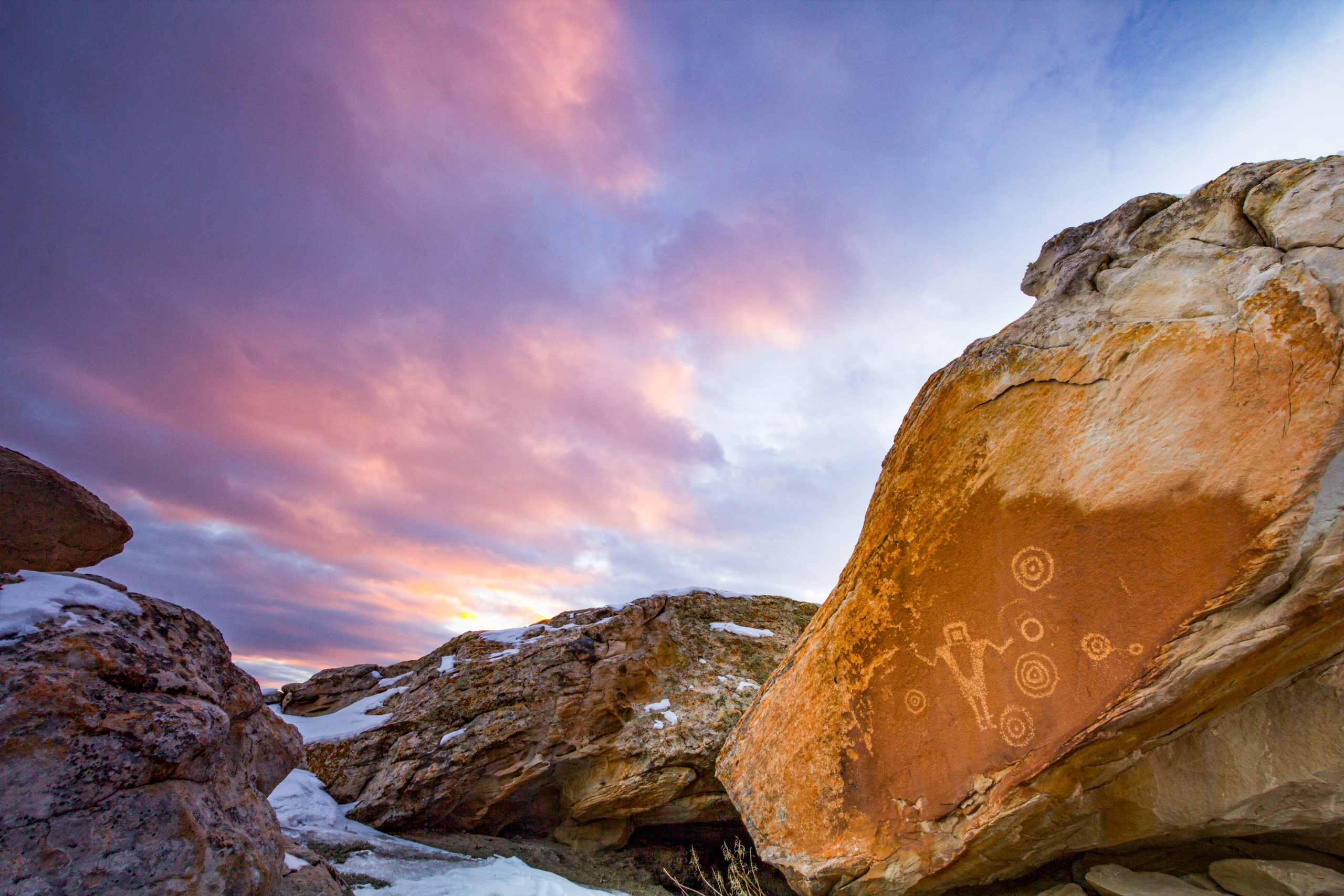Some information may be outdated.
This week, we speak about rock art with Jonathan Bailey, a photographer and conservationist who is partnering with the Utah Rock Art Research Association to record and protect Emery County’s archaeological resources. We discuss petroglyphs, visitation, and karmic debts.
Science Moab: How would you define rock art?
Bailey: I would consider rock art to be paintings, pictographs and petroglyphs. I prefer the term “rock art” because it is not a form of written language. It does not correlate to exact words. “Art” encompasses a very broad definition.
Science Moab: When you search for rock art, do you have a destination in mind, or do you just head out?
Bailey: Usually I walk out not knowing, because particularly for conservation, I’m looking for sites that may not be documented or otherwise known by other people. I rely heavily on topography and looking at features that seem prominent in the landscape.
Science Moab: How is rock art being threatened today?
Bailey: Rock art is threatened through vandalism, looting, and other activities happening in the vicinity of the art. What is commonly forgotten is how the interplay of other activities impacts vandalism. For example, people usually think the battle is energy development versus tourism, saying they would prefer the former. The problem is that oil and gas may add infrastructure that’s accessible to everybody. For example, they may add road infrastructure: you see a site that previously required two or three days of backpacking to access that is now within a few miles of an energy road. So everything is encompassed in the realm of vandalism and visitation.
Science Moab: You’ve been putting together books with your photographs. What is the impetus behind these works?
Bailey: I don’t personally hope to gain from them. I think it’s kind of a karmic debt: you owe that place something. I believe that when you’re visiting a place, your visitation level has to match your level of reciprocity. And for a lot of people visiting a region for the first time, a really good way to do this is to learn about the tribes. Learn about etiquette. Visit sites developed for people.
But if you’re living out here and visiting sites regularly, particularly if you’re not Indigenous and can’t engage with it in that same respectful way, you have to find other means of helping these places persist. I would encourage everybody to look at how invasive you’re being as a visitor. Every person is invasive; there is no such thing as a non-invasive visitor. Make sure your reciprocity is matching how much you are invading that space.
Science Moab: What conservation efforts are you undertaking?
Bailey: It’s important to have a photographic record of these places, because even when they’re documented, a lot of times it’s with cell phones. Ninety percent of rock art in Utah hasn’t even been documented. When the art is destroyed or vandalized, there’s nothing to fall back on. There is also this other motivation of having these photographs as tools for conservation and for landscape-scale preserving of cultural landscapes. Information on these sites is being provided to the appropriate land-management agencies.
Science Moab: Have you engaged with any interpretation of any rock art you’ve come across?
Bailey: Interpretation is definitely up to the tribes. Anything I have is available to anybody or any tribal entity that wants to interpret them for their own purposes.
Science Moab: What is the most exciting or unique rock art you have come across?
Bailey: There are some sites that are basically beneath the earth. You might see slivers of them through the earth as you’re walking, and then you eventually find an opening, and there’s a cavity filled with paintings. Those are always really intriguing placements.
Science Moab: What first got you interested in rock art?
Bailey: Growing up in rural Utah where I could walk from my doorstep to rock art probably had a huge impact. But really, it’s always been what I loved. It provides a window into something that really, really goes beyond our knowing that is hard to pull yourself away from. And why would you want to?
Science Moab is a nonprofit dedicated to engaging community members and visitors with the science happening in Southeast Utah and the Colorado Plateau. To learn more and listen to the rest of Jonathan Bailey’s interview, visit www.sciencemoab.org/radio. This interview has been edited for clarity.
Appreciate the coverage? Help keep local news alive.
Chip in to support the Moab Sun News.





